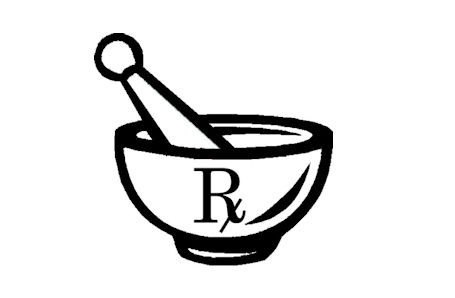Ask the Pharmacist
Q: Did you know that your blood pressure (BP) technique can be giving you incorrect readings? What is the proper technique to use to give yourself the most accurate measurement?
A: First off, let’s explain a little bit about what a blood pressure measurement tells you. Blood pressure readings consist of two numbers, systolic and diastolic, and are measured in mm Hg.
The systolic (or top number of a reading) measures the force that your heart exerts on your artery walls with each beat. The diastolic (or bottom number of a reading) measures the force that your heart exerts on your artery walls in between beats.
It is usual practice to take more than one reading (at least one to three minutes apart) at a time, and to record the average of those values and to measure your blood pressure twice a day.
Keep in mind that your blood pressure does vary during the day and tends to be higher in the morning for most of us.
Therefore, it is recommended to check your blood pressure at various times in the day (not each day, just change up your chosen two times each day) to see how your heart is performing at those times.
Most of us are familiar with White Coat Syndrome (an abnormally high blood pressure measurement in a medical environment with or without feelings of anxiety). Due to that phenomenon, many people purchase a blood pressure monitor to use at home to see what their blood pressure truly is. However, there are small improper blood pressure techniques that each lends itself to errors of five to 10 mm Hg, which can lead to improper treatment decisions.
Even though the home blood pressure monitors have been around for decades and sell themselves as simple and easy to use, we want to ensure you are getting a reliable measurement each and every time you take your blood pressure. Otherwise, what is the sense in checking it?
Click here to view common blood pressure errors and effect on BP readings
How can you artificially affect your blood pressure? Here’s some of the ways and how you can prevent them from happening:
Active listening while BP is measured can increase your systolic pressure by 10 mm Hg.
It is recommended to sit comfortably in a quiet place for five to 10 minutes in a chair with back support and legs/ankles uncrossed (crossed legs can increase BP) prior to taking your reading. It is important to not talk during this time as this has shown to affect BP. Even actively listening to others can have the same effect so try to look for that quiet area of your home.
Using an unsupported arm can increase your systolic pressure by 10mm Hg.
Your arm should be resting on a table or arm chair and it should be at the level of your heart; use a pillow to raise it to heart level, if needed. Sit up straight with your back supported by the back of the chair and your feet on the floor (remember to not cross those legs or ankles!). It is also important to use the same arm each time when measuring BP. It is customary to use your non-dominant arm unless you have been told otherwise.
A blood pressure reading on a full bladder can increase systolic pressure by >10 mm Hg.
It is best to empty the bladder before settling down to take a blood pressure reading to ensure accuracy.
A measurement taken over clothing or tight clothing rolled up over the arm, can produce false values.
It is best to use the cuff on your bare arm. Very light clothing may be worn under the cuff but the arm should be removed from most clothing rather than rolling the sleeve up the arm. This rolling of the sleeve produces a tightening of the vessels in the arm and will give an inaccurate reading.
Smoking or eating within 30 minutes can increase your systolic pressure by six to 20 mm Hg.
Any food, caffeine, tobacco and alcohol should be avoided within 30 minutes of measuring BP. If you wish to take a first morning reading, it is best if you don’t take it right out of bed. Rather, get up and void your bladder and take time to get dressed but take it before breakfast and medications. If you exercise first thing in the morning, take your reading before exercising.
An improper-fitting cuff can give you an inaccurate reading as well so be sure to get fitted prior to buying your own monitor.
The cuff should start two to three fingers above your elbow with the tubing at the bottom so that it is closest to your hand. Where the tubing comes out of the cuff should be roughly aligned with your brachial artery (the large artery running along the inside of your forearm) or if you can’t see it, the palm side of your baby finger.
For more information about this or any other health-related questions, contact the pharmacists at Gordon Pharmasave, Your Health and Wellness Destination. Also check the website at www.gordon-pharmasave.com/ and the Facebook page at www.facebook.com/GordonPharmasave/?fref=ts
References:
https://www.mayoclinic.org/diseases-conditions/high-blood-pressure/in-depth/high-blood-pressure/art-20047889
https://www.ncbi.nlm.nih.gov/pmc/articles/PMC3639494/
https://my.clevelandclinic.org/health/diagnostics/4014-blood-pressure-when--how-to-check-at-home/test-details
https://www.ncbi.nlm.nih.gov/pmc/articles/PMC2911816/#!po=16.6667
http://canadianpharmacistsletter.therapeuticresearch.com/pl/ArticleDD.aspx?nidchk=1&cs=PSAVE~CEPDA&s=PLC&pt=2&segment=11878&dd=340124
 Written By
Written ByNo bio for this author.

Related Stories
No related stories.